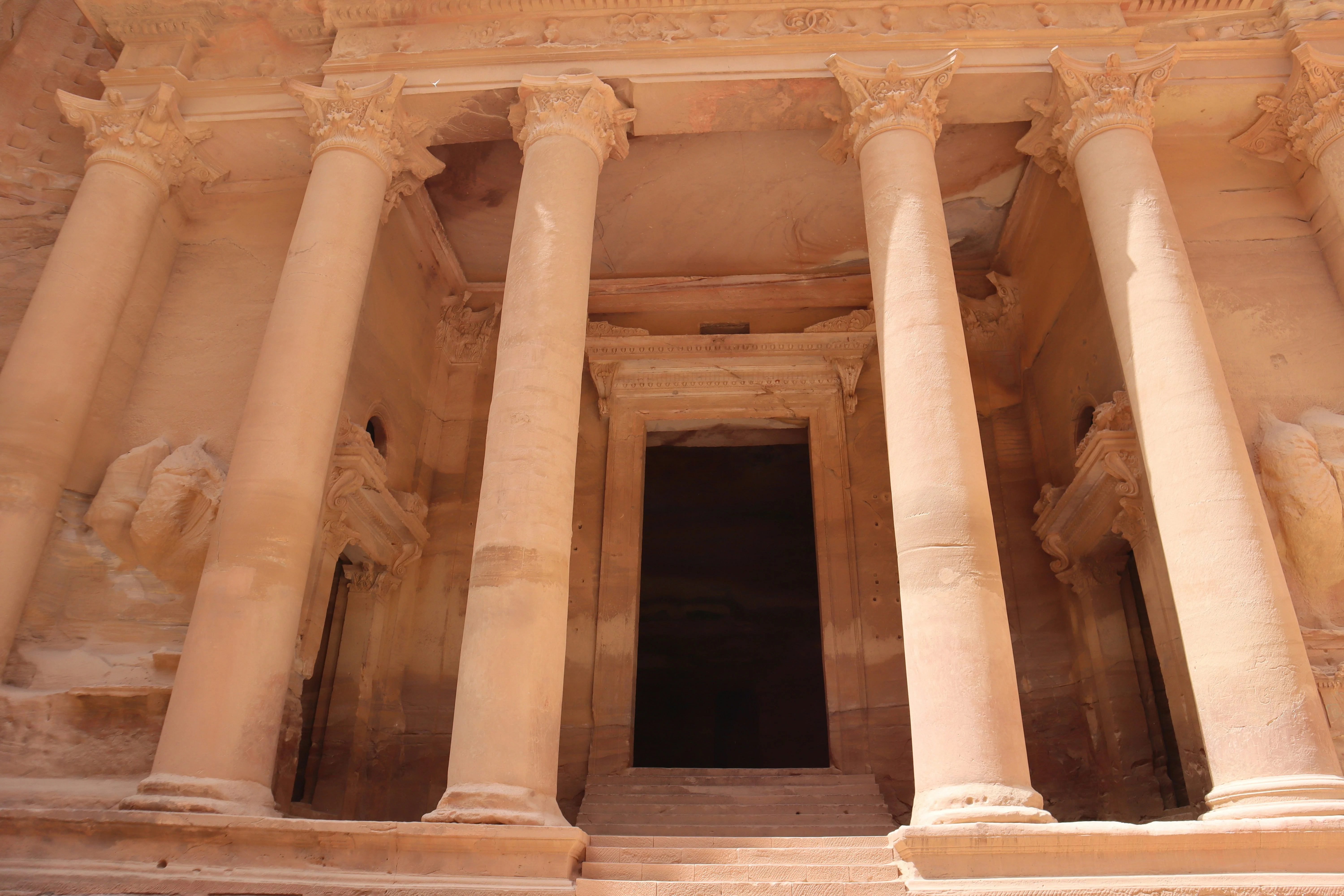The cruciform inscription of the Petra temple
The cruciform inscription
of the Petra temple
Monuments Sculptures The Roman Empire ruled Petra. Petra was occupied in 106 AD. The city was mainly traded by sea. The Roman Empire expanded eastward for 300 years. Peaceful life in Petra was left in the ancient city of Petra. A new street, the Column Street, through the center of the city is lined with massive columns in the traditional Roman style. And the 6-meter-high obelisks were carved out of the cliff face into the structure. The 3rd century BC Nabataean tombs. The carved cross on the inner wall of the monastery. It is a Byzantine church. The rock-cut path has more than 800 steps. The monastery is hidden among the high hills. One of the legendary monuments of Petra. The great treasure trove. The design and symbolism of the massive columns. The Nabataean skills in building the city.
Aelius Caesar, father of Roman Emperor Lucius Verus
Royal tombs on a high cliff carved into the entrance and decorated with stone and cliff face adjacent to the Nabataean spiritual practice structure. Rituals that took place here. The altar dedicated to the Nabataean gods Dushara and Al-Uzza of the Sao obelisk the stone. Next to the altar there are three steps leading to the circular altar on the Holy Land of Petra. The aqueduct on the summit of Jebel Madbah of the ritual waters flowed together with the blood of the animals offered for worship to the nearby stone basin used for purification and washing. The altar area consists of a rectangular triclinium a structure carved from the cliff face. The monuments of the Holy Temple of Petra dedicated to the gods are preserved in a site on a high cliff face.
The Religious Change of Petra, a Major Turn for the Nabataeans From Pagan Gods After the Romans Conquered Petra the first Christian Emperor Constantine I wanted to spread Christianity and moved the main capital from Rome to Byzantium. After the Romans conquered Petra Damaged by natural disasters in the 4th and 6th centuries many important temples and centers were rebuilt in Petra and the Roman Empire turned its focus to maritime trade.
The land route through Petra was less used, and many old temples were abandoned or converted into churches. Many of the trade centers closed in the 3rd century, and declined under Roman rule. The beginning of the spread of Christianity throughout the region until Petra became part of the Byzantine Empire in the 4th century. The neighboring cities became more powerful, and people from outside came to trade, and the culture began to change in Petra, changing the routes of travel, and the temples of Petra still remain in their original structures. The city's main cathedral is a striking symbol of this new era.









